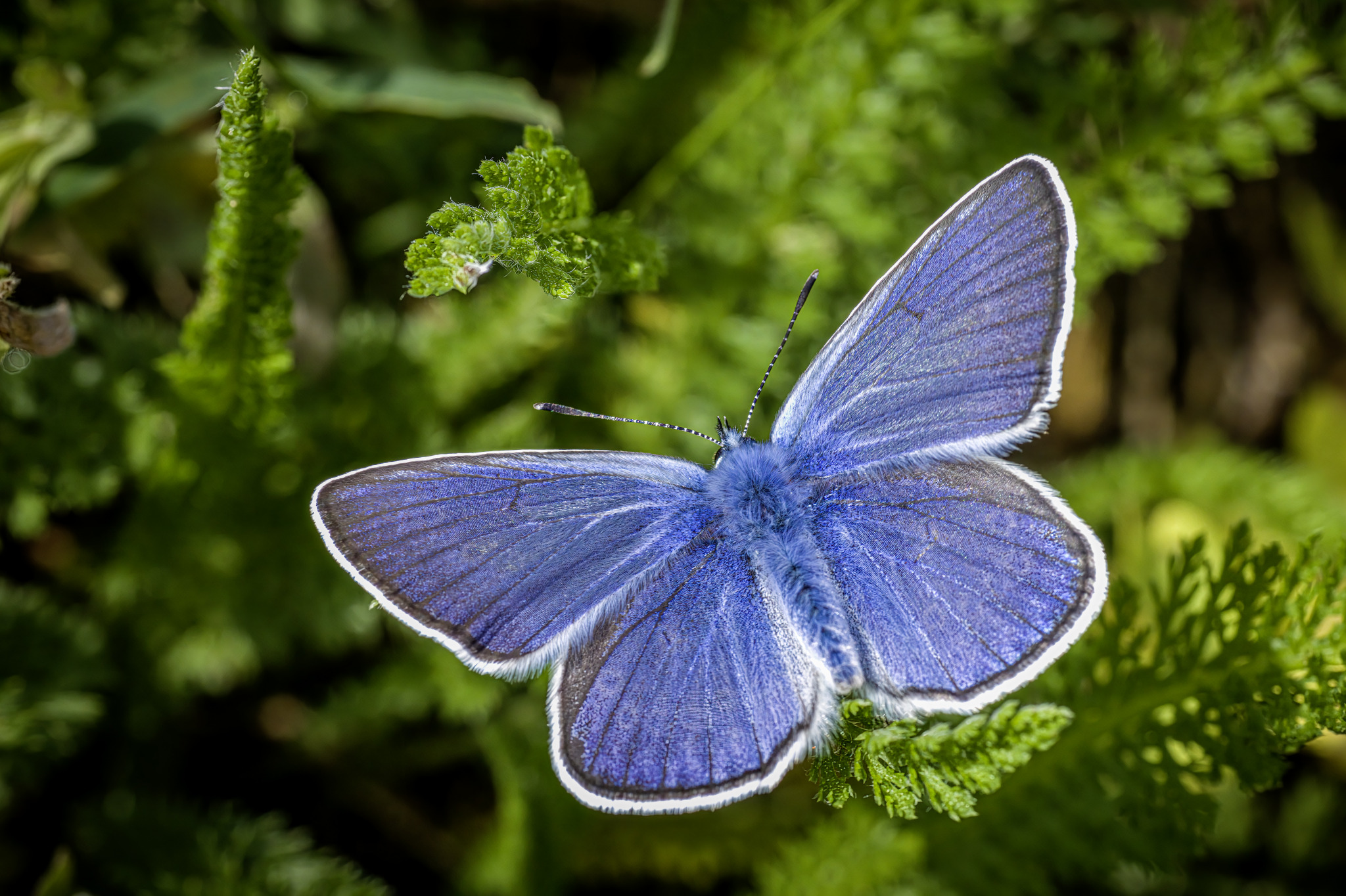Amanda’s Blue (Polyommatus amandus) is a beautiful and vibrant butterfly species found in Europe and parts of Asia. Here is a detailed overview of this species:
Appearance
- Wingspan:
- Typically ranges from 28 to 36 millimeters.
- Coloration:
- Males: Brilliant blue upper side with a fine black border and white fringe. The blue color is especially vibrant and can appear almost iridescent in sunlight.
- Females: Generally brown with a subtle blue dusting near the body, and orange submarginal spots on the hindwings.
- Under side: Both sexes have a pale greyish-brown underside with small black spots and white ringed spots, along with some orange submarginal markings on the hindwings.
Habitat
- Preferred Habitats:
- Found in a variety of habitats including grasslands, meadows, forest clearings, and areas with abundant wildflowers. They prefer areas with a rich variety of herbaceous plants.
- Geographic Range:
- Distributed across much of Europe and into parts of Asia, with a range extending from the Iberian Peninsula in the west to Siberia in the east.
Behavior
- Feeding:
- Adults: Feed on nectar from various flowering plants, particularly favoring species such as clover, vetch, and other legumes.
- Larvae: Feed on the leaves of various leguminous plants, especially different species of vetch (Vicia) and trefoil (Lotus).
- Flight Period:
- Typically observed from May to August, with one or sometimes two generations per year depending on the region.
- Activity:
- Diurnal and very active during sunny days. They are often seen fluttering around flowers and basking with their wings open.
Life Cycle
- Eggs:
- Laid singly on the leaves of host plants.
- Larvae:
- Green with white and pink stripes, mimicking the leaves of the host plants to avoid predation.
- Pupae:
- Chrysalis is well-camouflaged, often formed close to the ground on stems or among leaf litter.
- Adults:
- Emerge from the chrysalis in late spring to early summer, depending on the climate and location.
Identification Tips
- Vibrant Blue Males: The bright blue upper side of males is a key identifying feature.
- Orange Submarginal Spots: The presence of orange spots on the underside of the hindwings helps distinguish this species from similar blue butterflies.
- White Ringed Spots: The black spots with white rings on the underside are characteristic.
Ecological Role
- Pollination: As nectar feeders, they play a significant role in pollinating various wildflowers.
- Food Source: Serve as prey for birds, small mammals, and other predators, contributing to the food web.
Conservation Status
- Population: Generally stable across its range, but local declines can occur due to habitat loss and environmental changes.
- Threats: Habitat destruction, intensive agriculture, and pesticide use are the primary threats.
Conservation Efforts
- Habitat Preservation: Maintaining and protecting meadows, grasslands, and wildflower-rich areas is crucial for their survival.
- Reduced Pesticide Use: Promoting environmentally friendly farming and gardening practices helps protect this and other butterfly species.
Human Interaction
- Observation: A favored species among butterfly enthusiasts and photographers due to its vibrant coloration and active behavior.
- Education: Used in educational programs to highlight the importance of biodiversity and habitat conservation.
Summary
Amanda’s Blue (Polyommatus amandus) is a striking butterfly with brilliant blue males and subtly marked females. Found across Europe and parts of Asia, this species thrives in diverse habitats such as meadows and forest clearings. Its role in pollination and as part of the food web underscores its ecological importance. Conservation efforts focused on habitat preservation and reduced pesticide use are essential to ensure the continued survival of this beautiful butterfly.
Visited 185 times, 25 visit(s) today
Views: 292
Subscribe to the newsletter:
